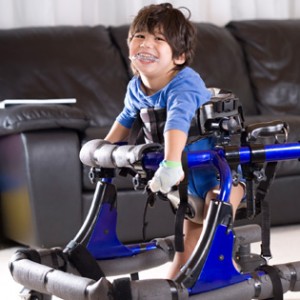Constraint-Induced Movement Therapy for Children with Cerebral Palsy
Children born with cerebral palsy face numerous challenges, with one of these being loss of limb control. This is especially true for children who have hemiplegia, a subset condition of cerebral palsy which affects a limb on just one side of the body. In such cases, the child is unable to effectively use the affected limb due to damage in the motor control part of the brain.
Constraint-induced movement therapy (often referred to as CI, CIT, or CIMT) is a type of treatment which seeks to improve and restore the usability of an affected limb. This kind of treatment was first used in individuals who had suffered strokes, leaving them with motor skill deficiencies on one side of their bodies. As the therapy progressed through the years, it was adopted by occupational therapists responsible for rehabilitating children who had developed cerebral palsy.
The Mechanics behind the Therapy

Constraint-Induced Movement Therapy
With Constraint-induced movement therapy, a child is made to wear a contraption which limits the use of his or her good limb. This forces them to use the affected limb more. With time, the child learns to rely on the weakened arm which, in the end, improves the quality of life as well as helps prevent him or her from experiencing complications such as nerve death of the affected limb and atrophy.
Restraints used in constraint therapy range in scope. Some types of constraints include specialized mitts, slings, triangular bandages, a half glove, or a splint. These are kept in place for hours at a time while a child receives appropriate therapy. In some cases, the child is required to keep these restraints in place for days or even weeks until a time when the affected limb shows signs of progress.
There are numerous benefits of constraint therapy. Some of them include:
- Improved hand movement quality with regard to the affected arm.
- Improved motor skills such as grasping, using fingers or picking up objects.
- Balanced use of both hands.
- Participation in numerous activities by the child, which improves his or her social skills.
Is CIMT Right for My Child?
Constraint therapy should be administered with care because of the complexities associated with developing a treatment plan. In addition, it may not be suitable for everyone, so certain things need to be taken into account such as the age and the environment of the child.
Not much is known about the long-term effects of constraint therapy, so it’s always important to speak to your child’s therapist before commencing this kind of treatment.
